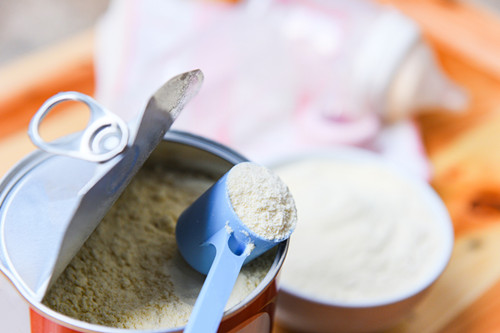It’s specified in Article 8 of the Administrative Measures for the Registration of Infant Formula Products that the applicant shall possess proper production capabilities compatible with the production of its products, comply with good manufacturing practices for powdered infant formula foods, and implement a Hazard Analysis and Critical Control Point (HACCP) system.
When applying for infant formula milk powder registration, the applicant shall submit 9 required documents to the State Administration for Market Regulation (SAMR), including “8) Materials on R&D, production, and inspection capabilities”. Additionally, the review agency may organize on-site inspections as necessary for verification to ensure the consistency between the application materials and the actual circumstances.

Based on regulatory requirements, CIRS Group provides a comprehensive analysis of the detailed requirements for preparing production capability certification materials for registration under the new national standard.
Companies with products already on the market
If the applicant is a manufacturer of products already on the market, only simplified documentation is required under Section 8 “Proof of Production Capability”. It falls into two specific types:
Types | Materials required |
Domestic manufacturer of infant formula milk powder with food production permit | Copy of food production permit (including original and duplicate copies, along with details of product varieties) |
Overseas manufacturer of infant formula milk powder with certificate of import registration | Copy of certificate of import registration |
New applicants
For new applicants, the following materials shall be submitted:
1. Essential production equipment (including equipment specifications), facility inventory, ensuring compliance with relevant regulations:
The inventory should include all key production equipment and facilities across all processes. It is recommended to list process steps, equipment names, models, brand manufacturers, and technical specifications;
2. Surrounding area environmental map, production facility floor plan, and equipment layout:
The drawings should be clear and legible, with concise and clear annotations; and
3. Certificates or materials demonstrating compliance with good manufacturing practices for powdered infant formula foods and implementation of HACCP system.
On-site inspection requirements
1. Production workshop
1) The workshop is divided into clean operation areas, semi-clean operation areas, and general operation areas, with effective isolation measures to prevent cross-contamination;
2) The temperature, humidity, and air cleanliness in the production workshop meet the required standards; and
3) In dry production areas within the clean operation zones of the workshop, water is not used during production.
2. Production layout
1) The arrangement and layout of production workshops, auxiliary facilities, and production equipment are reasonable and meet production requirements;
2) Effective isolation is implemented based on production processes, operational needs, and cleanliness requirements; and
3) The production process layout is well-organized, with seamless connections between each process to prevent cross-contamination.
3. Quality management system
1) The applicant has established a quality management organization with dedicated personnel, and these quality management personnel are capable of meeting production requirements;
2) A comprehensive quality management system has been established; and
3) The quality management system is strictly operated according to its procedures.
4. Production qualifications
The main qualification documents are consistent with actual operations.
5. Process control and technical documentation
1) A production process quality management system that complies with regulations, along with corresponding operation instructions or procedures;
2) Formulas, technical standards, registers, records, production processes, and key control points are defined in management regulations; and
3) The above management regulations are effectively implemented and well-documented.
6. Critical control point
Key control points are identified reasonably, and operations strictly adhere to regulations and operational instructions, with standardized control records.
7. Purchasing
- Developed procurement documents and quality safety standards for food ingredients, food additives, and packaging materials;
- Complete quality safety assessment procedures and reports for supplier identification and changes; and
- Purchases are made only after approval by the quality safety management department.
Further information
- Strategies for Enterprises in Response to New Infant Formula Registration Regulations in China
- 【Infant Formula Milk Powder】Key Technical Points for Registration under the New National Standard in China - Base Powder
- 【Infant Formula Milk Powder】Key Technical Points for Registration under the New National Standard in China - Hydrolyzed Milk Protein
- 【Infant Formula Milk Powder】Key Technical Points for Registration under the New National Standard in China -Probiotics
- 【Infant Formula Milk Powder】Key Technical Points for Registration under the New National Standard in China - Research and Development Capacity
If you need any assistance or have any questions, please get in touch with us via service@cirs-group.com.

